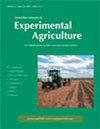Comparison of the antioxidant properties of emu oil with other avian oils
引用次数: 47
Abstract
The antioxidant properties of emu oil were compared with oils derived from the fat of other avian species. We first examined their free radical scavenging activity against the 2,2-diphenyl-1-picryl hydracyl radical. The concentration of emu oil in the test solution that caused 50% neutralisation (IC50) was variable (24.5 ± 5.9 mg/mL, range 5.3–55.4 mg/mL), but similar to values obtained for other ratites (10.7 ± 5.9 mg/mL). In contrast, the IC50 values for duck and chicken oil were much higher (118.0 ± 8.1 mg/mL). The variability in the radical scavenging activity of emu oil preparations may reflect variations in the diets of the birds, the processing protocol and/or the storage age of the oil. We also evaluated some of the ratite oils for their inhibitory capacity on human erythrocyte membrane oxidation, by measuring the reduction of the thiobarbituric acid-reactive substance (TBAR) production. Emu oil had a greater effect in decreasing TBAR production than either the ostrich or rhea oil, suggesting that it offers more protection than the other ratite oils against oxidative damage. In conclusion, we demonstrated that emu oil has both antioxidant properties in vitro and a protective role against oxidative damage in a model biological membrane system. The antioxidant or radical scavenging properties of emu oil appear to be due to minor constituents in the non-triglyceride fraction of the oil, while its high ratio of unsaturated to saturated fatty acids (UFA : SFA) offers protection against oxidative damage.鸸鹋油与其它禽类油抗氧化性能的比较
将鸸鹋油的抗氧化性能与其他鸟类油脂进行了比较。我们首先检测了它们对2,2-二苯基-1-苦味基羟基自由基的清除活性。引起50%中和的测试溶液中鸸鹋油的浓度(IC50)是可变的(24.5±5.9 mg/mL,范围5.3-55.4 mg/mL),但与其他比率(10.7±5.9 mg/mL)的值相似。相比之下,鸭油和鸡油的IC50值更高,为118.0±8.1 mg/mL。鸸鹋油制剂的自由基清除活性的变化可能反映了鸟类的饮食、加工方案和/或油的储存年龄的变化。我们还通过测量硫代巴比妥酸反应物质(TBAR)产生的减少量来评估一些比率油对人体红细胞膜氧化的抑制能力。鸸鹋油在减少TBAR产生方面比鸵鸟油或美洲鸵油有更大的效果,这表明鸸鹋油比其他比率油提供更多的保护,防止氧化损伤。总之,我们证明了鸸鹋油在体外具有抗氧化特性,并在模型生物膜系统中具有抗氧化损伤的保护作用。鸸鹋油的抗氧化或清除自由基的特性似乎是由于其非甘油三酯部分的少量成分,而其不饱和脂肪酸与饱和脂肪酸(UFA: SFA)的高比例提供了抗氧化损伤的保护。
本文章由计算机程序翻译,如有差异,请以英文原文为准。
求助全文
约1分钟内获得全文
求助全文

 求助内容:
求助内容: 应助结果提醒方式:
应助结果提醒方式:


